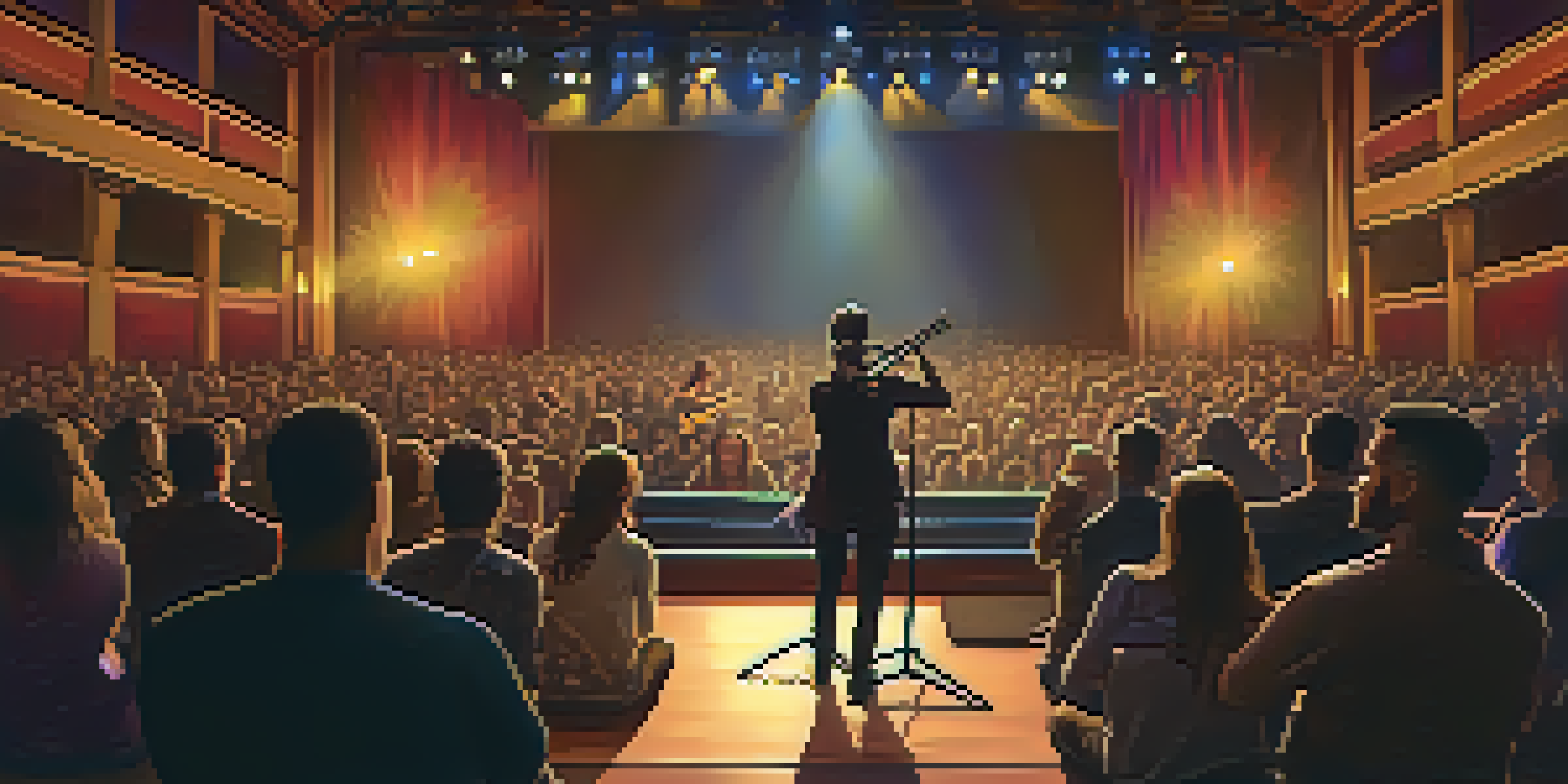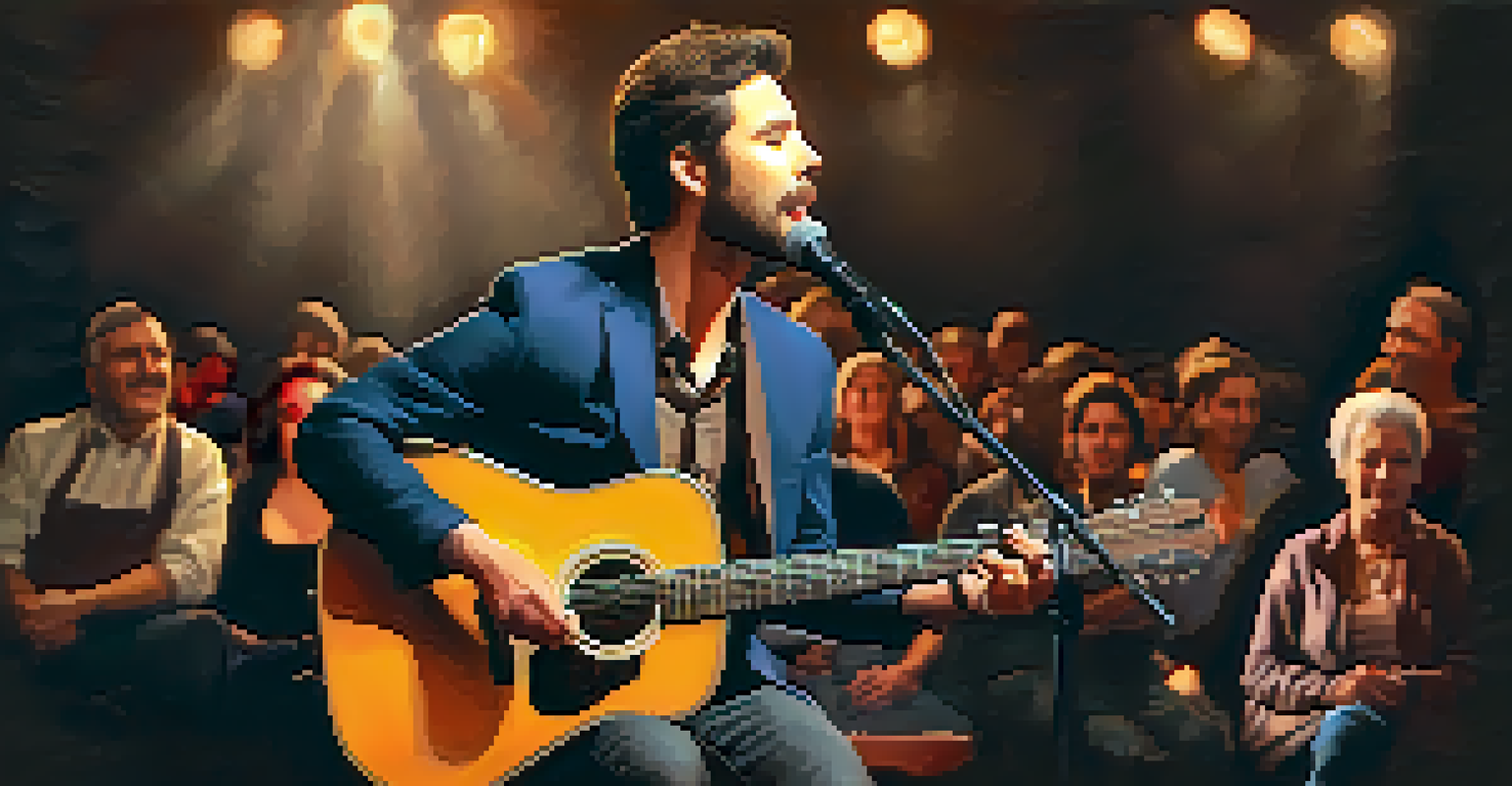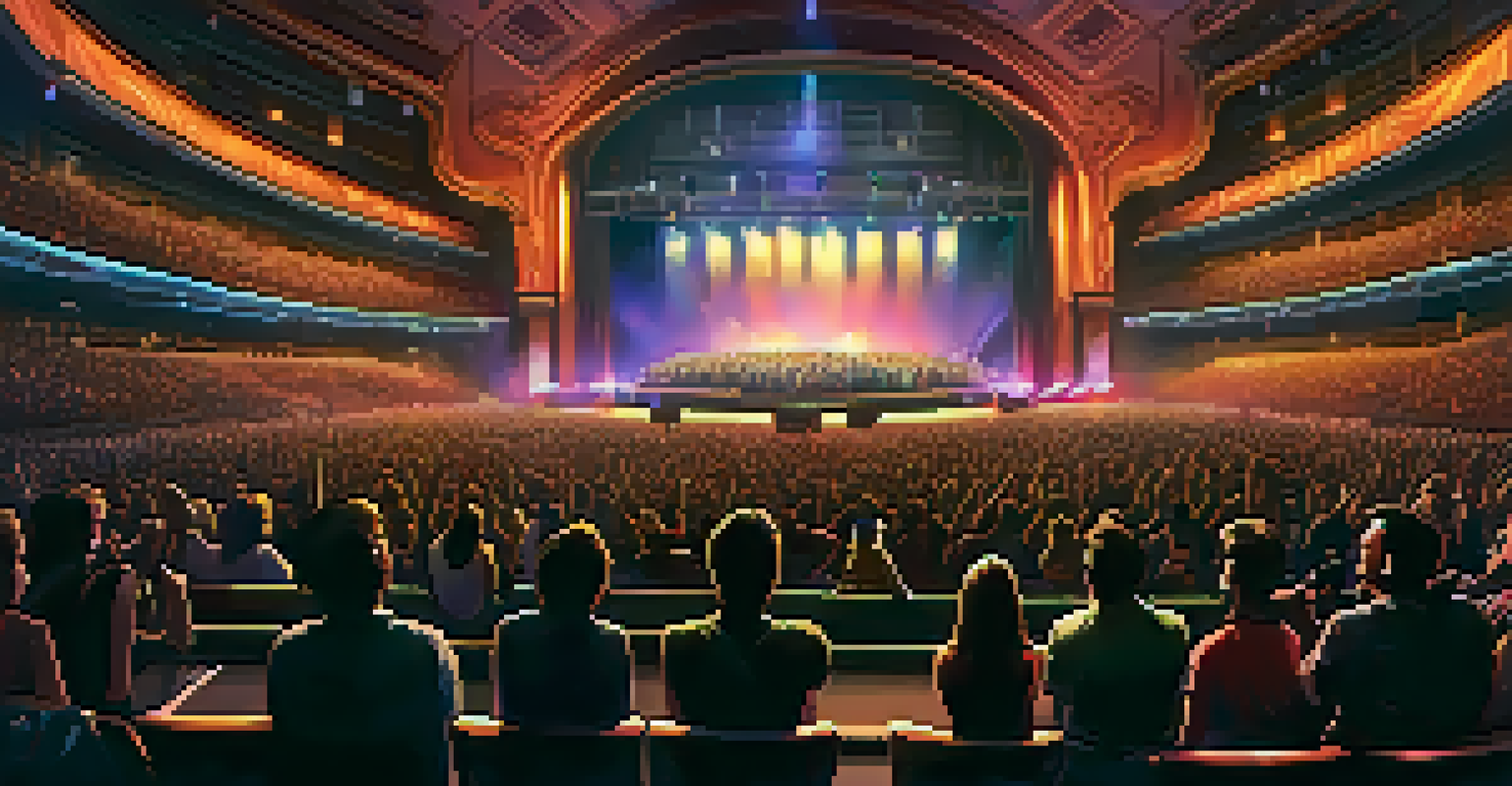Connect Emotionally: Playing From the Heart on Stage

Understanding the Power of Emotional Connection
Emotional connection is the heartbeat of every great performance. When musicians connect with their audience on an emotional level, it creates an unforgettable experience for everyone involved. This connection often transforms a simple performance into a shared journey filled with feelings, stories, and memories.
Music can change the world because it can change people.
Think of your favorite live concert. What made it special? Chances are, it wasn’t just the music; it was the way the artist communicated their emotions, drawing you into their world. Whether it’s joy, sadness, or nostalgia, tapping into these feelings can elevate your performance beyond just playing notes.
Related Resource
By prioritizing emotional connection, you not only engage your audience but also create a space where they feel seen and understood. This fosters loyalty and a deeper appreciation for your art, making every performance more impactful.
The Role of Authenticity in Performance
Authenticity is critical when it comes to connecting emotionally with your audience. People can sense when an artist is genuine, and this perception can enhance the connection between performer and listener. Authenticity can come from sharing personal stories or simply being true to your emotions during a performance.

For example, when an artist shares a personal experience that inspired a song, it invites the audience to relate and engage on a deeper level. This vulnerability not only humanizes the performer but also resonates with listeners, making them feel part of the narrative.
Emotional Connection Elevates Performances
Creating an emotional connection with the audience transforms a performance into a shared experience filled with feelings and memories.
Embracing authenticity allows you to create a performance that feels organic and relatable. When you prioritize being yourself on stage, you encourage your audience to be themselves, fostering a collective emotional experience.
Techniques for Evoking Emotion
There are various techniques artists can use to evoke emotion during performances. These include dynamic changes in volume, tempo shifts, and the strategic use of silence. By varying your delivery, you can capture and maintain the audience's attention, guiding them through the emotional landscape of your music.
The best artists know that the best way to connect with their audience is to be authentic and share their truth.
For instance, consider how a sudden pause before a powerful chorus can create anticipation, heightening the emotional impact. Similarly, a soft, slow section can draw listeners in, allowing them to reflect on the feelings being conveyed. These elements work together to create an engaging emotional dialogue.
Related Resource
Incorporating these techniques requires practice and awareness of how your audience is responding. By paying attention to their reactions, you can adjust your performance in real-time, creating a more immersive experience.
Reading Your Audience’s Emotions
Connecting emotionally on stage is a two-way street. While you share your emotions through your performance, being attuned to your audience is equally important. Watching their reactions can provide valuable insight into how they are feeling and what they need from you in that moment.
Imagine performing a heartfelt ballad and noticing the audience's teary eyes. This visual feedback can encourage you to lean into that emotion, amplifying your delivery and creating a more profound experience for everyone. Alternatively, if the audience seems disengaged, you might choose to change your approach or bring more energy into your performance.
Authenticity Engages the Audience
Being authentic and sharing personal stories resonates with listeners, fostering a deeper emotional bond during performances.
Developing this skill takes time, but it’s essential for creating lasting connections. The more you practice reading your audience, the more intuitive your performances will become.
The Impact of Storytelling in Music
Storytelling is a powerful tool for fostering emotional connections during performances. By weaving narratives into your music, you provide context that helps your audience relate to your songs on a personal level. This storytelling can be woven into lyrics or conveyed through the overall arc of your performance.
For instance, sharing the story behind a song can transform its meaning, allowing listeners to connect their experiences with the emotions expressed in your music. This not only enriches their understanding but also makes them feel like they are part of your journey.
Related Resource
Ultimately, storytelling can create a shared experience that transcends individual feelings, uniting performers and audiences. This sense of community enhances emotional engagement and makes each performance feel like a collective celebration.
Creating the Right Atmosphere for Connection
The atmosphere of a performance can significantly influence emotional connection. Factors such as lighting, stage setup, and even the venue itself contribute to the overall experience. A cozy, intimate setting can foster a sense of closeness, encouraging deeper emotional engagement.
Consider how a dimly lit room with candles can create a warm, inviting ambiance, making the audience feel more at ease. In contrast, a large concert hall may require different strategies to evoke connection, such as powerful visual effects or interactive elements.
Atmosphere Enhances Emotional Impact
The right atmosphere, influenced by elements like lighting and venue, plays a crucial role in facilitating emotional connections between artists and audiences.
By being intentional about the atmosphere you create, you enhance the potential for emotional connection. It’s about crafting an environment where both you and your audience feel comfortable expressing and experiencing emotions together.
Practicing Self-Expression Through Music
Self-expression is at the core of emotional connection in music. The more you understand and express your emotions, the better you can convey them to your audience. This process often involves exploring your feelings and experiences, which can ultimately enhance your authenticity on stage.
Engaging in practices like journaling or improvisation can help you tap into your emotions and discover new ways to express them through your music. The more you can articulate your feelings, the more effectively you can connect with others.

This practice not only benefits your performances but also contributes to your personal growth as an artist. Embracing self-expression allows you to form a deeper bond with your audience, making every performance a unique emotional exchange.